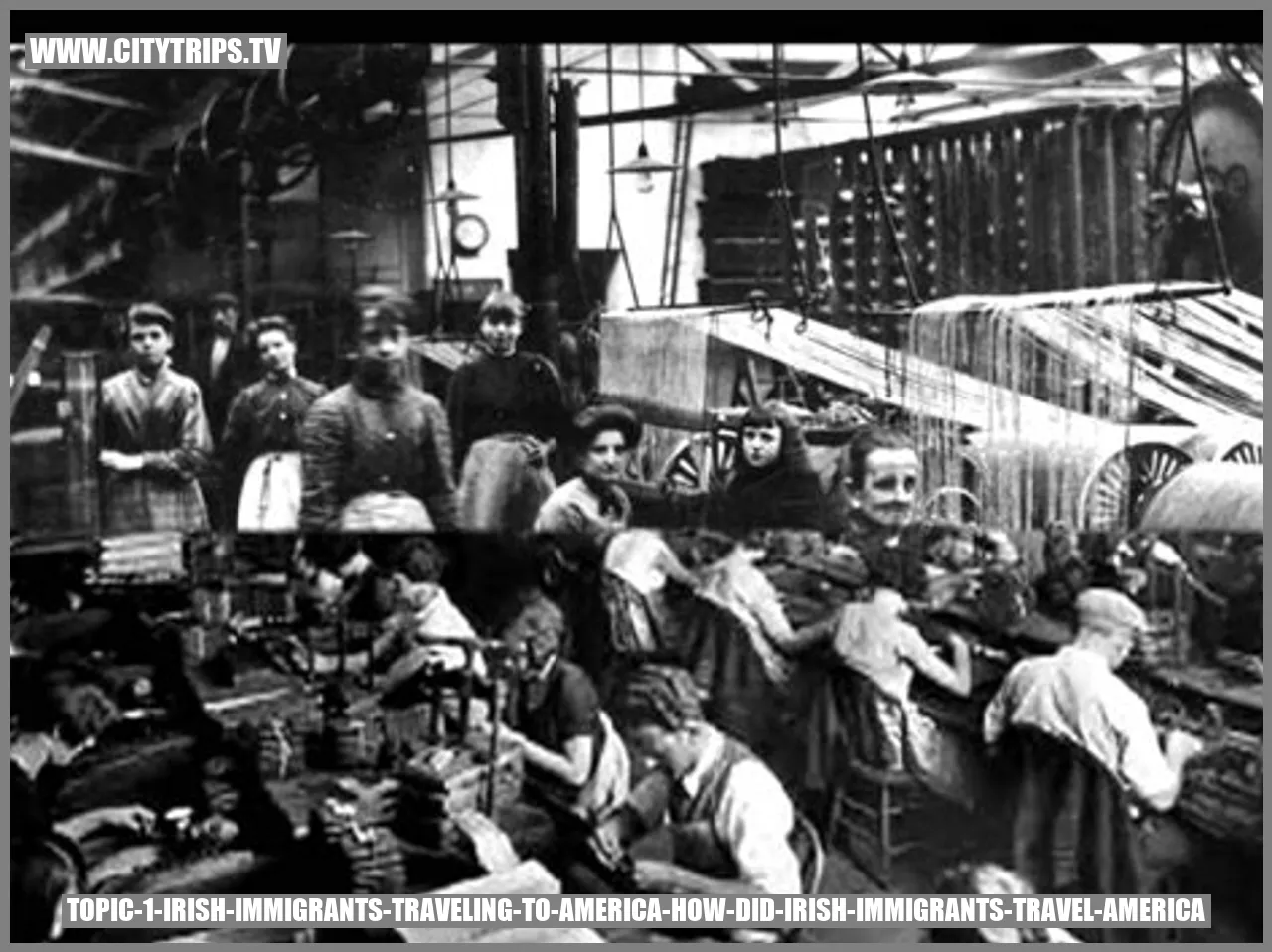
The Journey of Irish immigrants to America
The Voyage on Sailing Ships
During the mid-1800s, a significant influx of Irish immigrants embarked on a perilous expedition across the Atlantic Ocean to seek a better future in the United States. Sailing ships became their main means of transportation for this arduous journey. These vessels, however, posed numerous challenges for the Irish passengers who were escaping factors such as the devastating Great Famine and political turmoil pushing them away from their homeland.
Conditions in Steerage
The majority of Irish immigrants who traveled to America could only afford the cheapest accommodations known as steerage. Unfortunately, steerage was infamous for its cramped and unsanitary environment. Passengers were squeezed into small compartments, often lacking proper ventilation and privacy. These tight quarters made the journey incredibly difficult and uncomfortable, lasting for several weeks or sometimes even longer.
The Harsh Reality of the Journey
The journey endured by Irish immigrants on their way to America was harsh and demanding. They faced adverse conditions including rough seas, extreme weather, and outbreaks of diseases due to the overcrowded living conditions. Some ships even suffered from inadequate provisions, leading to food shortages and insufficient medical care. These formidable circumstances took a toll on the physical and mental well-being of the passengers.
Arrival and the New Challenges
After enduring a long and grueling journey, Irish immigrants finally reached the shores of the United States. However, their challenges did not end there. Many had to enter through bustling and chaotic immigration centers like Ellis Island, where they underwent rigorous medical examinations and legal processing. The Irish immigrants were determined to seize opportunities for employment, improved living conditions, and a chance for a brighter future in their new homeland.
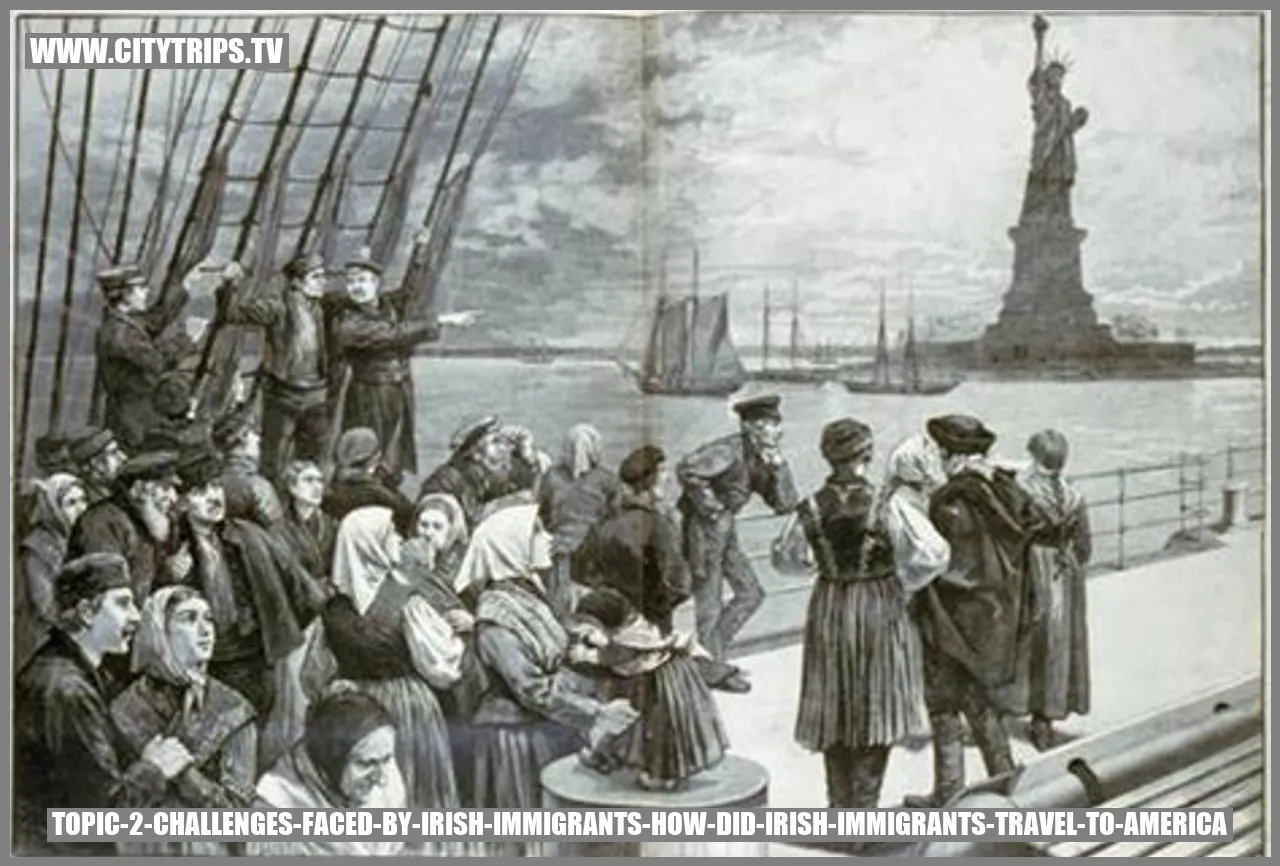
The Hurdles Encountered by Irish Immigrants
: Language Obstacle
Also read:
how did immigrants travel to america
how did greta thunberg travel to america
Mastering the English language posed a significant obstacle for Irish immigrants. Originating from a predominantly Gaelic-speaking nation, many Irish migrants struggled to effectively communicate in English upon their arrival in America. This language barrier impeded their ability to secure employment, carry out daily tasks, and integrate into mainstream American society.
: Discrimination and Bias
Upon reaching America, Irish immigrants faced widespread discrimination and bias. They often endured mistrust and prejudice due to their Catholic faith, distinct cultural practices, and impoverished backgrounds. Discrimination against the Irish was pervasive, affecting various aspects of their lives, including finding housing, obtaining jobs, and participating in social interactions.
: Financial Hardships
Economic struggles presented another significant challenge for Irish immigrants. In Ireland, many experienced extreme poverty and lacked access to economic opportunities. Although they sought better prospects in America, the majority of Irish immigrants arrived with meager financial resources. This hindered their ability to establish themselves economically, resulting in long-term poverty and a constant battle for survival.
: Limited Social Support
Irish immigrants frequently encountered a lack of social support networks in America, exacerbating their challenges. Unlike other immigrant groups that already had established communities, the Irish arrived during a time when Irish enclaves were only just beginning to form. This absence of social support made it more challenging for immigrants to find assistance, guidance, or rely on established networks for support in unfamiliar surroundings.
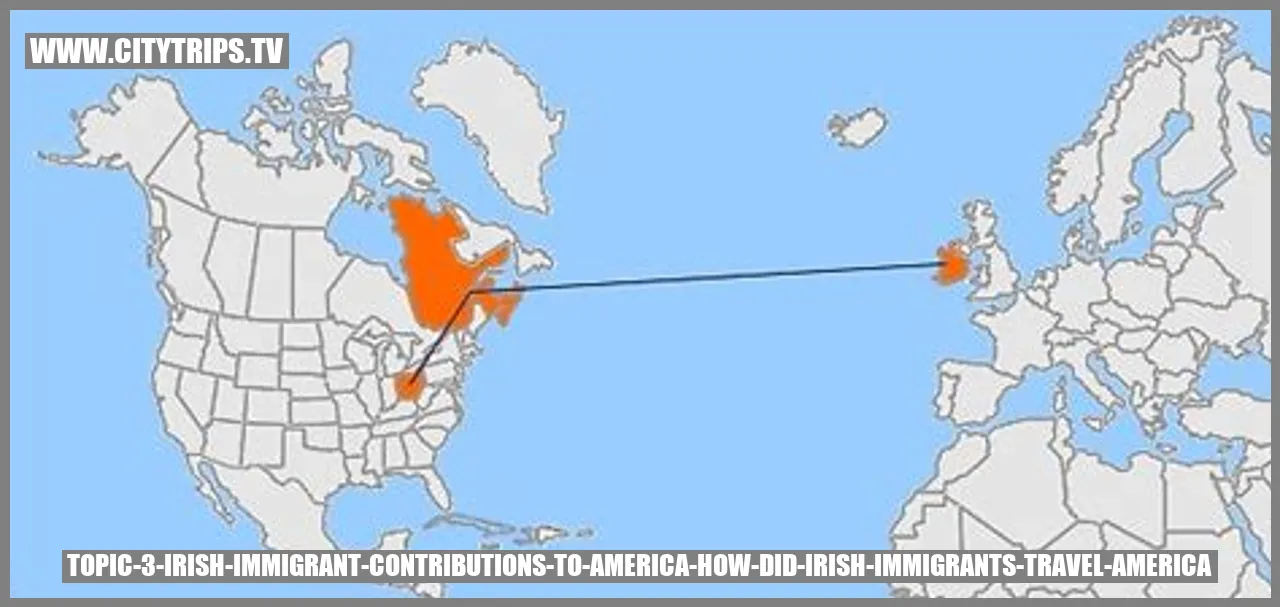
The Impact of Irish Immigrants on America
: Contributions to the Labor Force
The influx of Irish immigrants during the 19th century had a profound influence on America’s economic and industrial development. Escaping the devastating Great Famine, they brought invaluable skills and expertise that contributed to the growth of the nation. Irish immigrants found employment in various sectors, including construction, mining, and factories. Their tireless work ethic and determination played a vital role in the construction of critical infrastructure, such as roads, canals, and railways.
: Enriching American Culture
The arrival of Irish immigrants brought a vibrant cultural heritage that significantly enriched American society. They introduced traditional Irish music, dance, and literature, adding a unique and captivating aspect to the cultural scene. Celebrations like St. Patrick’s Day, originally a religious observance, have become widely embraced by people of all backgrounds, celebrating Irish culture. Additionally, Irish cuisine, with its iconic dishes like corned beef and cabbage, has become an integral part of American culinary traditions.
: Influencing Political Activism
Irish immigrants played a pivotal role in shaping American political activism and advocating for their rights. They organized themselves into political societies, such as the Fenian Brotherhood, to fight for Irish independence and social justice causes. The Irish American vote became a significant force in American elections, advocating for policies that supported their community and addressing broader socio-political issues. Their activism and persistence contributed to the advancement of civil rights in America.
: Religious Legacy
The enduring religious legacy of Irish immigrants in America is profound. They brought with them a strong Catholic faith and established churches and educational institutions across the country. Irish Catholic communities played a crucial role in providing social services, such as hospitals, orphanages, and schools. The Catholic Church became a cornerstone institution that contributed to the spiritual and educational growth of numerous Americans. The influence of Irish immigrants’ religious values and institutions can still be felt today.
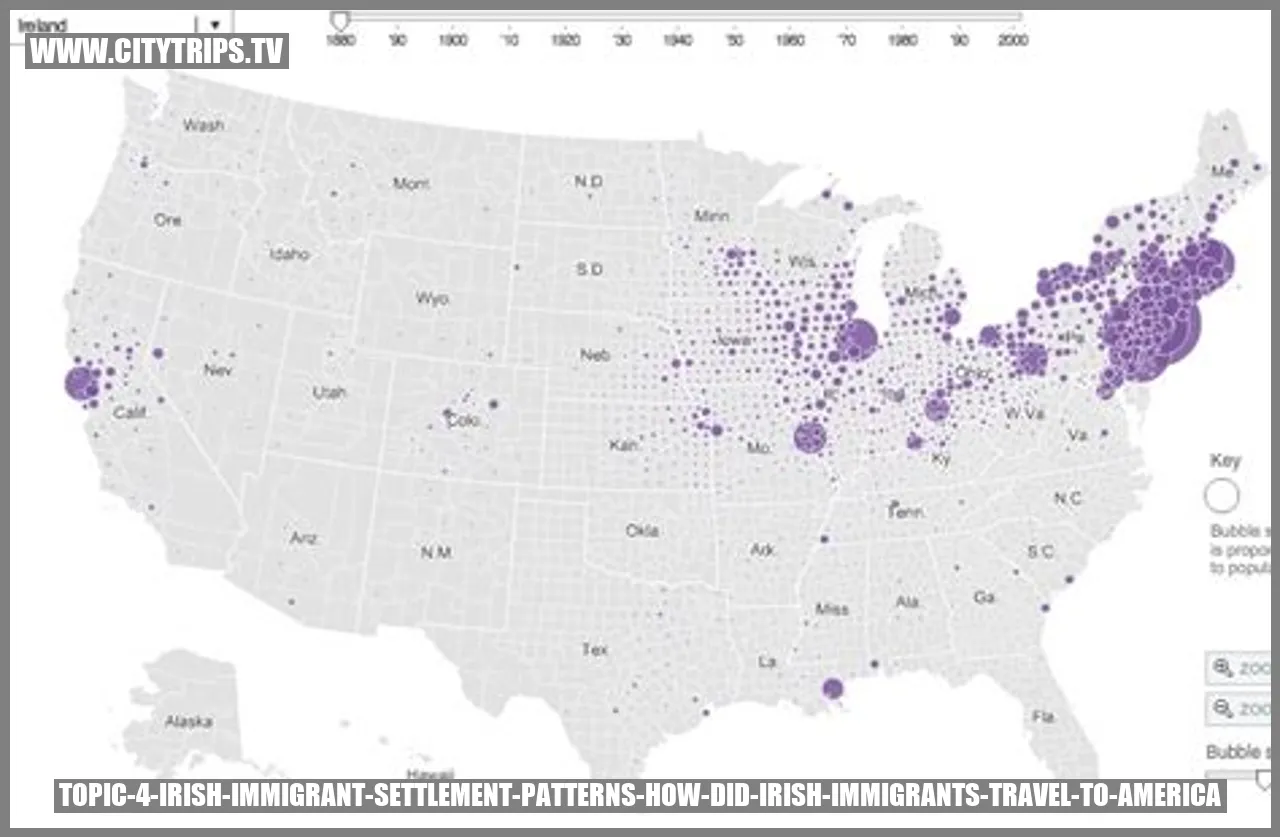
Exploring Irish Immigrant Settlement Patterns
: Concentration in Urban Areas
In the 19th century, Irish immigrants flocked to the rapidly growing urban centers of America. They arrived in substantial numbers, enticed by the promise of employment opportunities in factories, mines, and construction sites. Destinations like New York, Boston, and Chicago became magnets for Irish immigrants, resulting in vibrant urban neighborhoods infused with Irish influences.
: Thriving in Rural Farming Communities
While a significant portion of Irish immigrants settled in cities, many also established themselves in rural farming communities. They seized the chance to work as agricultural laborers or tenant farmers, particularly in the Midwest and New England states. Embracing the farming lifestyle, Irish immigrants made notable contributions to the agricultural development of the regions they inhabited.
: The Strength of Ethnic Enclaves
Irish immigrants formed tight-knit ethnic neighborhoods that served as cultural and social hubs, facilitating their assimilation into American society. These close communities often comprised Irish churches, schools, and community centers, ensuring the preservation of Irish customs and fostering a strong sense of community among the immigrants.
: Venturing into the Expanding West
As America pushed westward, Irish immigrants also sought new opportunities in frontier regions. They actively participated in the construction of railways, canals, and mines, providing their labor to the development of the West. Communities heavily influenced by Irish culture emerged in cities like San Francisco and Denver, reflecting the significant presence of Irish immigrants in these flourishing areas.
Exploring Irish Immigration to America: Frequently Asked Questions
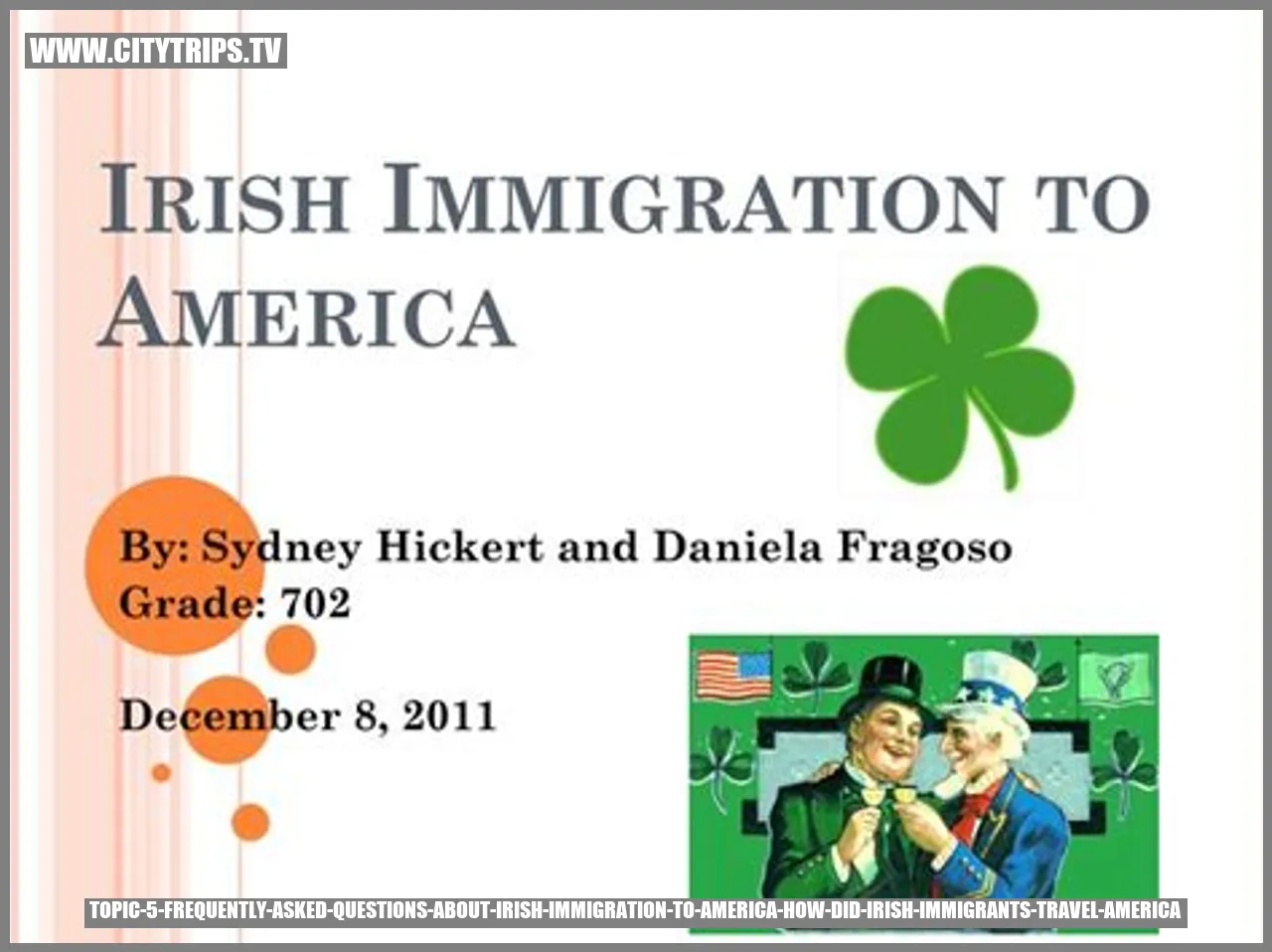
: The Scale of Irish Immigration during the 19th Century
Have you ever wondered how many Irish immigrants set foot on American soil throughout the 19th century? It is estimated that around 4.5 million Irish individuals embarked on this momentous journey. Driven by the devastating Great Famine and a quest for a brighter future, the Irish made up a substantial portion of the immigrant population in the United States.
: Overcoming Discrimination: The Ordeal of Irish Immigrants in America
Did you know that Irish immigrants faced extensive discrimination upon their arrival in America? Imagine being subjected to pervasive prejudice and stereotypes, portrayed as untamable and resistant to assimilation. The era was accompanied by a prevailing anti-Irish sentiment known as “nativism,” which fostered exclusionary policies and discriminatory practices.
: Tracing the Footsteps: The Occupational Path for Irish Immigrants in America
Ever wondered what kind of jobs Irish immigrants commonly pursued in America? In their pursuit of livelihood, they predominantly found themselves engaged in perilous and low-paying occupations. From grueling construction and mining work to toiling away in factories, the Irish community encountered fierce competition and often found themselves at the bottom rungs of the socio-economic ladder. Alternatively, some sought employment as domestic workers, street laborers, or servants.
: Sustaining Heritage: How Irish Immigrant Communities Preserved Their Cultural Traditions
Have you ever pondered how Irish immigrant communities in America diligently preserved their cultural heritage? They exhibited commendable resilience by establishing various societies, clubs, and associations aimed at celebrating their Irish roots and extending support to fellow immigrants. These organizations actively organized cherished events including the iconic St. Patrick’s Day parades, Gaelic language classes, and captivating traditional music and dance performances. Churches, too, played an indispensable role in upholding Irish customs and served as vibrant social hubs for the tightly-knit community.

